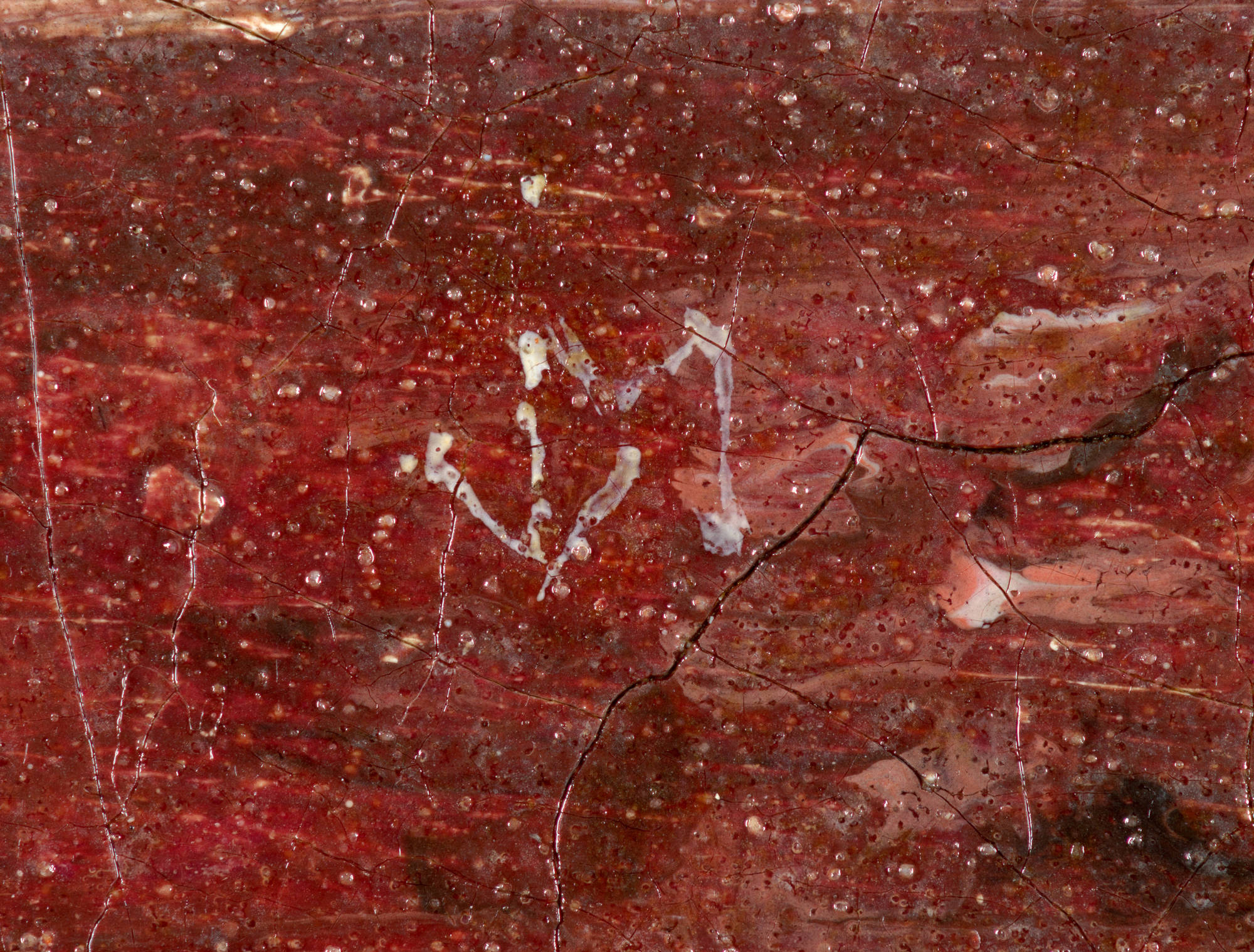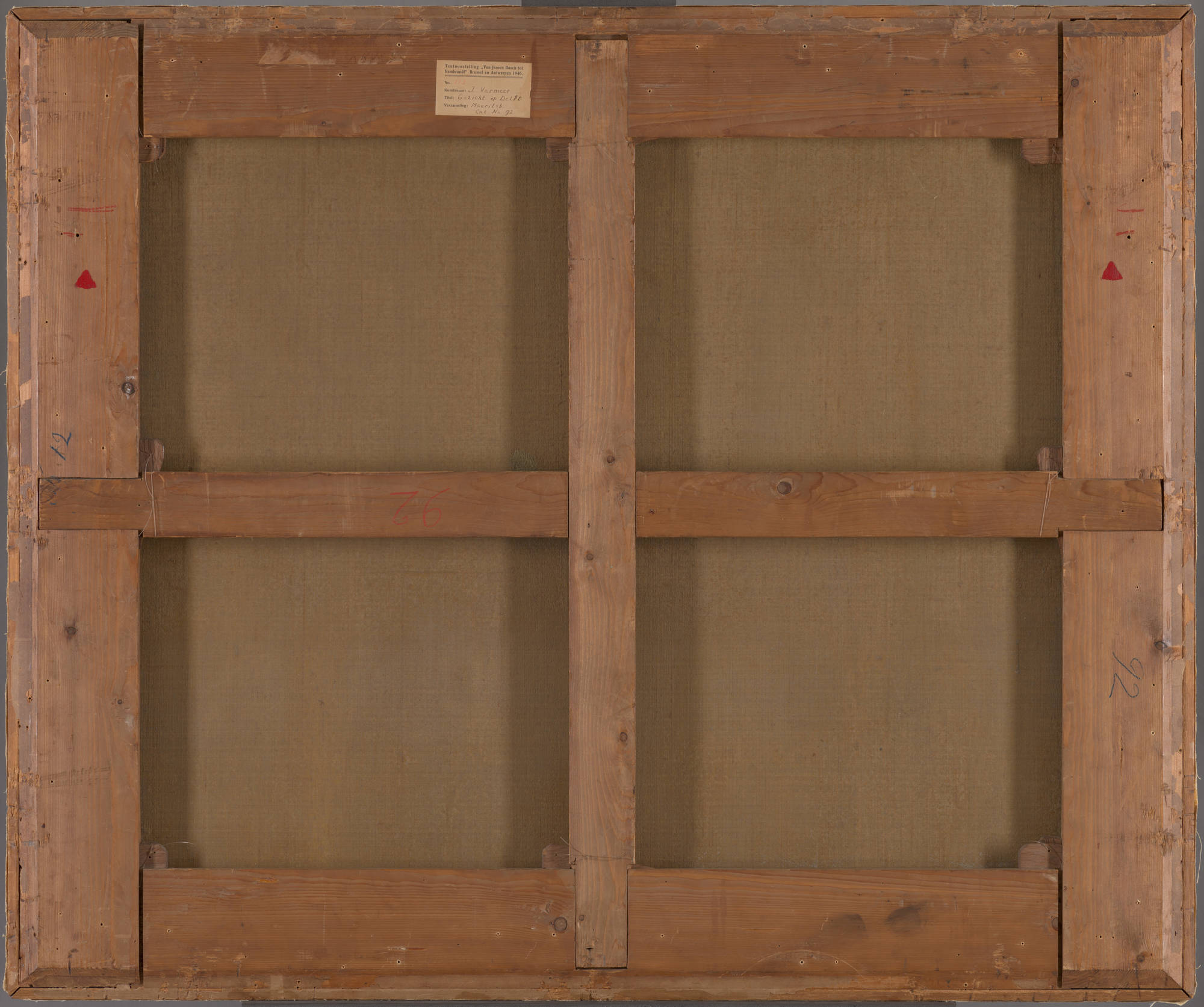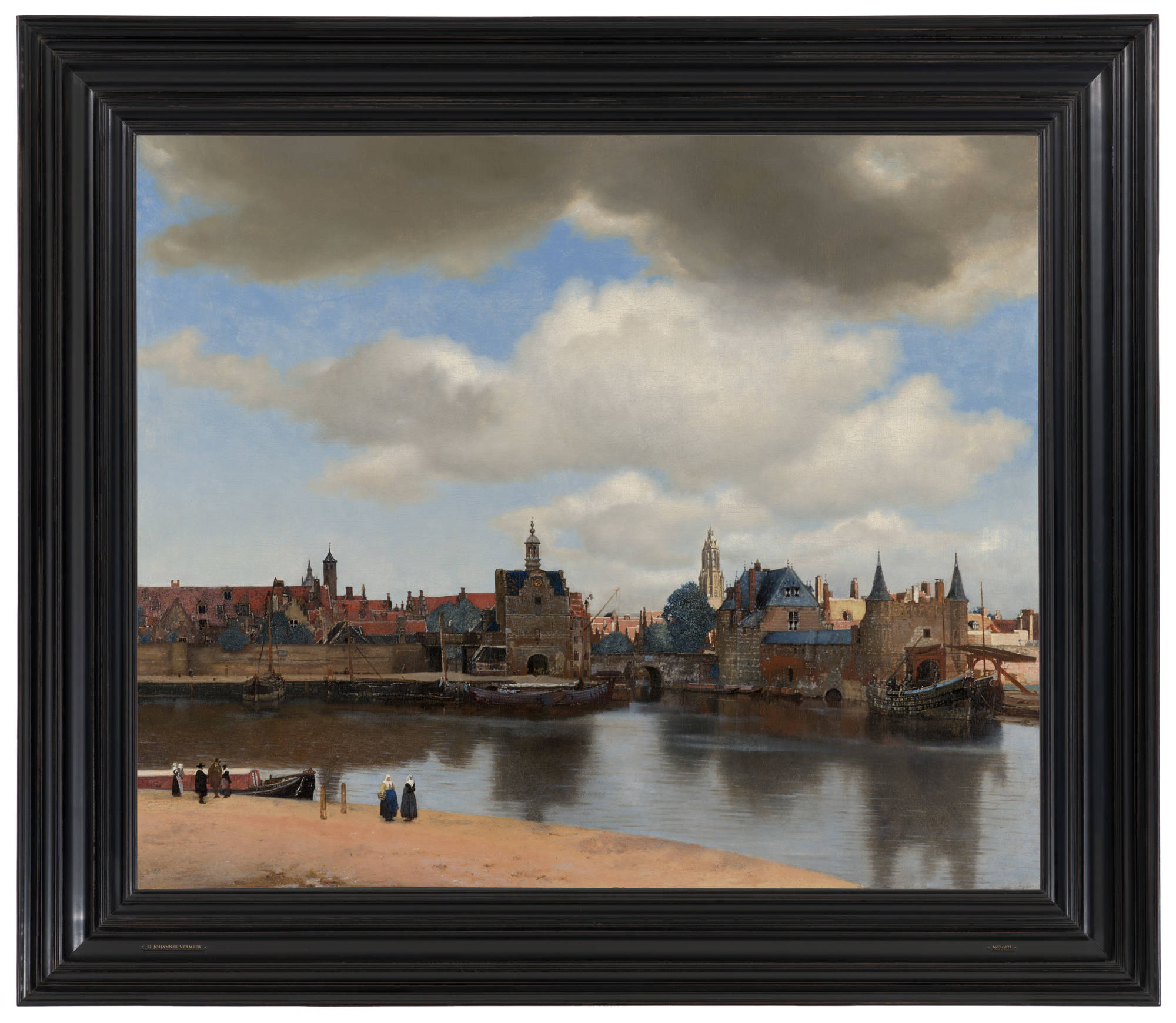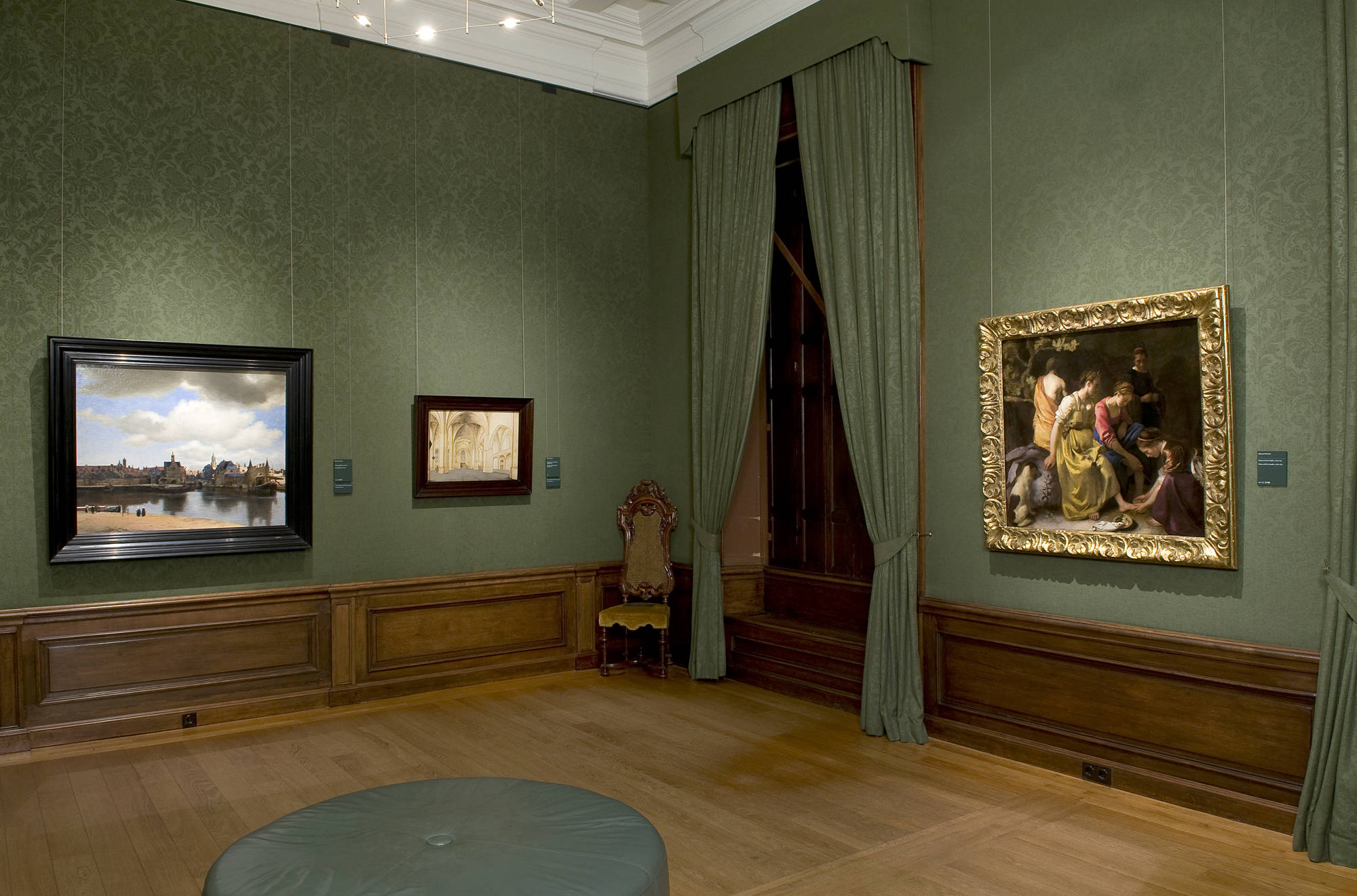Johannes Vermeer’s View of Delft is without a doubt the most celebrated cityscape in seventeenth-century Dutch art. It made an overpowering impression on art lovers from the outset. The play of sunlight and shadow, the cloudy sky from which light seems to radiate and the subtle reflections on the water all contributed to this impact. Vermeer depicted the city from the southeast, with the Kolk in the foreground, a triangular harbour at the southern limit of the city. On the right, behind us, the Schie canal leads in the direction of Rotterdam, Delfshaven and Schiedam. On the other side of the water lies the city. On the left we can see part of the city wall, and further to the right are the Schiedam and Rotterdam gates. Between them, the tower of the New Church (Nieuwe Kerk) rises above the buildings. Nothing appears to be moving; all is serenity. The boats in the water are all moored, their sails lowered. There is virtually no wind; a soft breeze ruffles the reflecting water in places. The trees are full of leaves; the season must be late spring or summer, and it is morning, since the sun is in the east. Human life plays a subordinate role in the scene. Two groups of people are talking in the foreground, while a few figures are walking about the quayside in front of Schiedam Gate, almost too small to be discernible.
High above the town, clouds float by. The nearest cloud is a very dark one, which casts its shadow on the quayside, the water and the foremost buildings on the opposite side. Other parts of the town are in the sun. The roofs and towers of the New Church are bathed in radiant sunlight. This strong contrast is an original invention, with which Vermeer achieved considerable depth. He leads our gaze, as it were, under the dark cloud to the city, where our eyes are automatically drawn towards the light, into the depth of the scene. Vermeer has set out to achieve balance and tranquillity in his composition. To this end he has manipulated reality a little, as is clear when we compare his cityscape to topographical drawings of this spot. In fact the buildings were arranged far more untidily than this, the skyline was more jagged, and spaces between some of the buildings provided glimpses of the view beyond. In Vermeer’s painting the bridge between the two gates is straighter and longer than in reality, and the Rotterdam Gate and its annexes are lower, close to water level. Furthermore, the only space that might have allowed us to see further into the distance – over the bridge between the two gates – is screened by trees. The point of these interventions was to emphasise the horizontal lines in the composition – the water, the buildings, and the sky.
Vermeer was highly inventive in his painting of the View of Delft. In every element he depicted, he looked for the best way of rendering its structure. In the bright yellow roof on the right he has suggested the roughness of the surface by using coarse grains of the pigment white lead in the underpainting. In the tower of the New Church, which catches the full sunlight, he applied a thick, smooth layer of lead-tin yellow to the most brightly illuminated sections, as if modelling with paint. This creates the impression that the scene is shimmering in the bright sunlight. But his most extreme innovation, perhaps, are the many tiny dots of paint on the hull of the boat near Rotterdam Gate. Viewed from a distance, they suggest the reflection of the sparkling water.
In the eighteenth and early nineteenth centuries, Vermeer and his oeuvre were relatively unknown to the art-loving public. Many of his paintings were to be found in major collections and were sold for large sums of money, but they were often attributed to other painters. This situation changed around 1850, largely as a result of the publications of the French art critic Étienne-Joseph Thoré. Vermeer’s fame has steadily grown since then, among connoisseurs and the general public alike. One of his greatest admirers was the French novelist Marcel Proust (1871-1922), who is particularly famous for his À la recherche du temps perdu, published in seven volumes between 1913 and 1927. The visual arts are a frequent topic of conversation in À la recherche, and Vermeer’s View of Delft plays an important role. Proust saw this painting at least twice: the first time when he visited the Mauritshuis in October 1902, and the second time in Paris in May 1921, where it was included in an exhibition of Dutch paintings at the Jeu de Paume. On the latter occasion, Vermeer’s painting affected Proust so profoundly that in the fifth volume of À la recherche he described one of the main characters, the ailing writer Bergotte, visiting that same exhibition and dying of a heart attack in front of the painting, overcome by emotion.
(this is a reworked version of a text published in in: P. van der Ploeg, Q. Buvelot, Royal Picture Gallery Mauritshuis: A princely collection, The Hague 2005, pp. 252-254)











